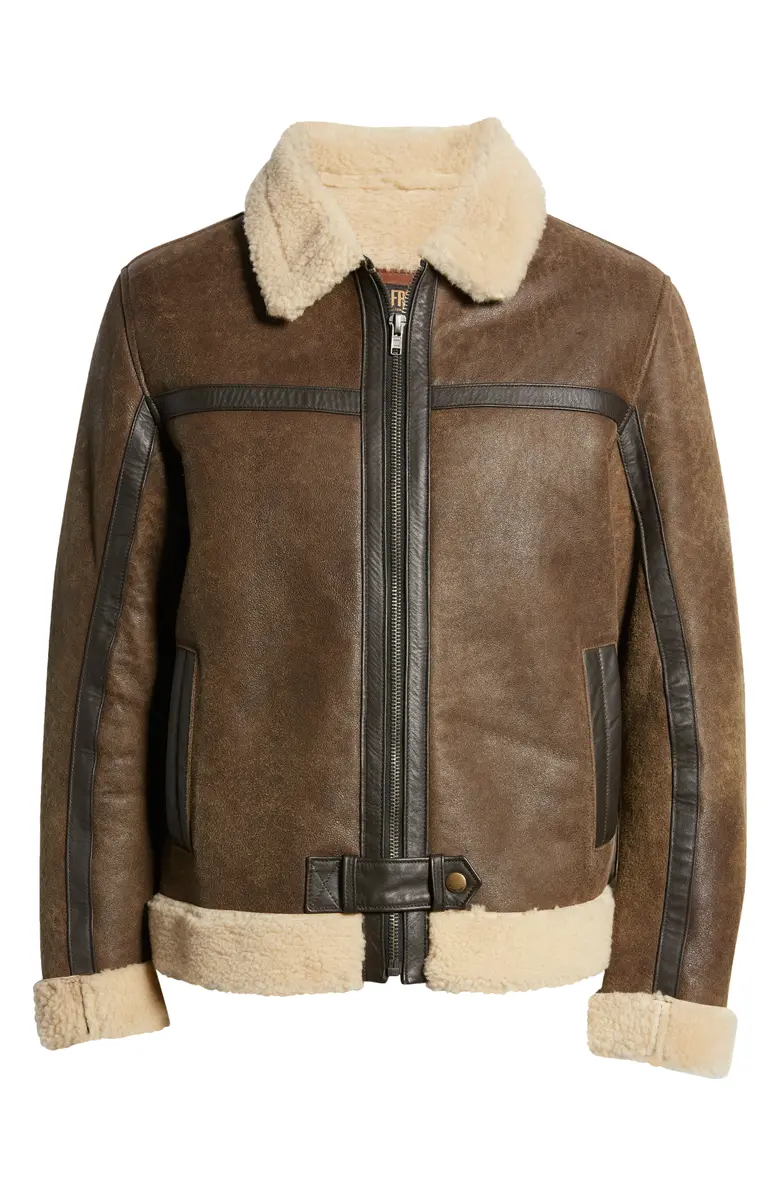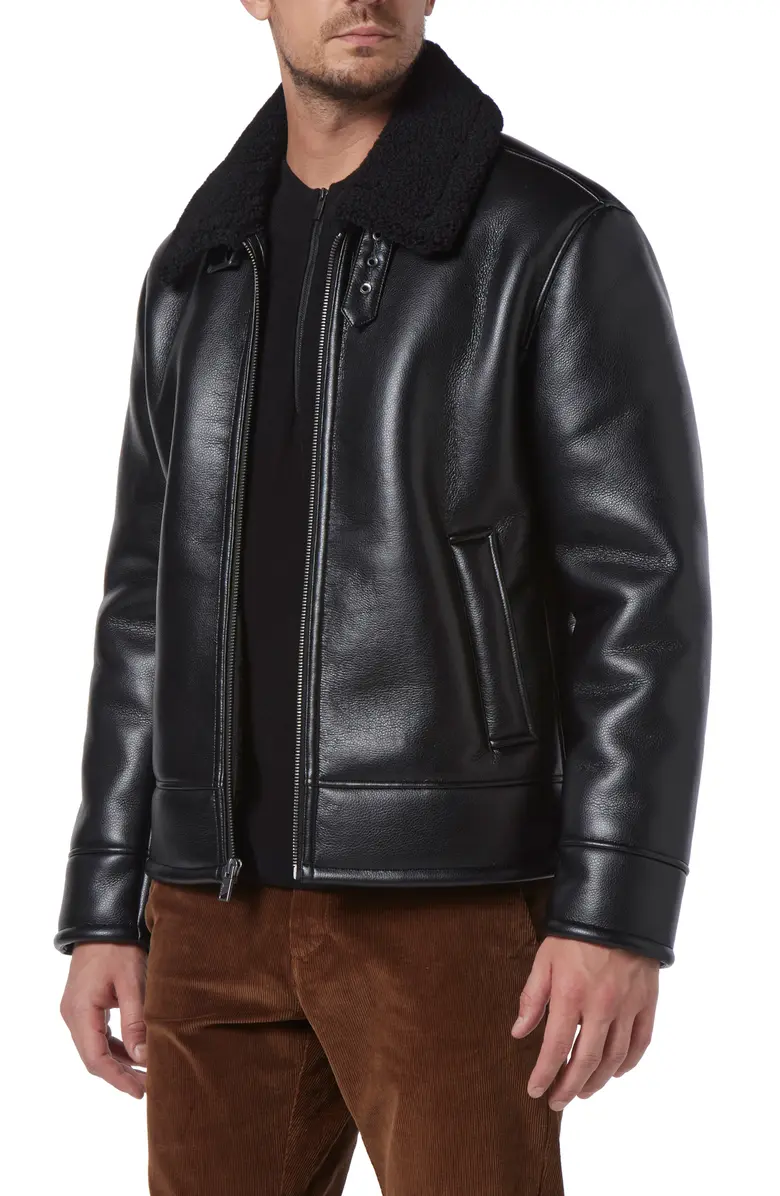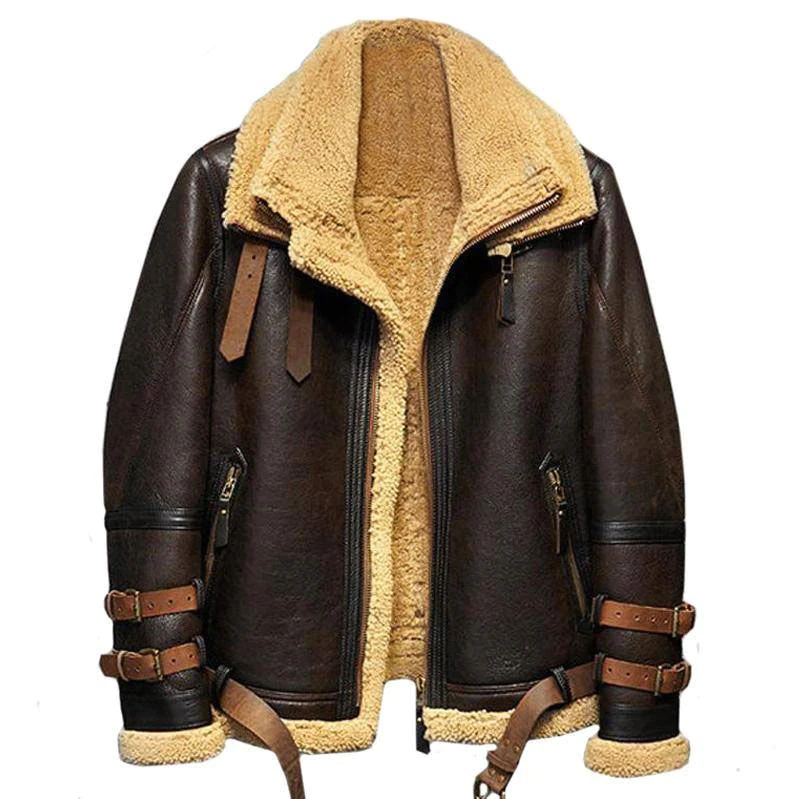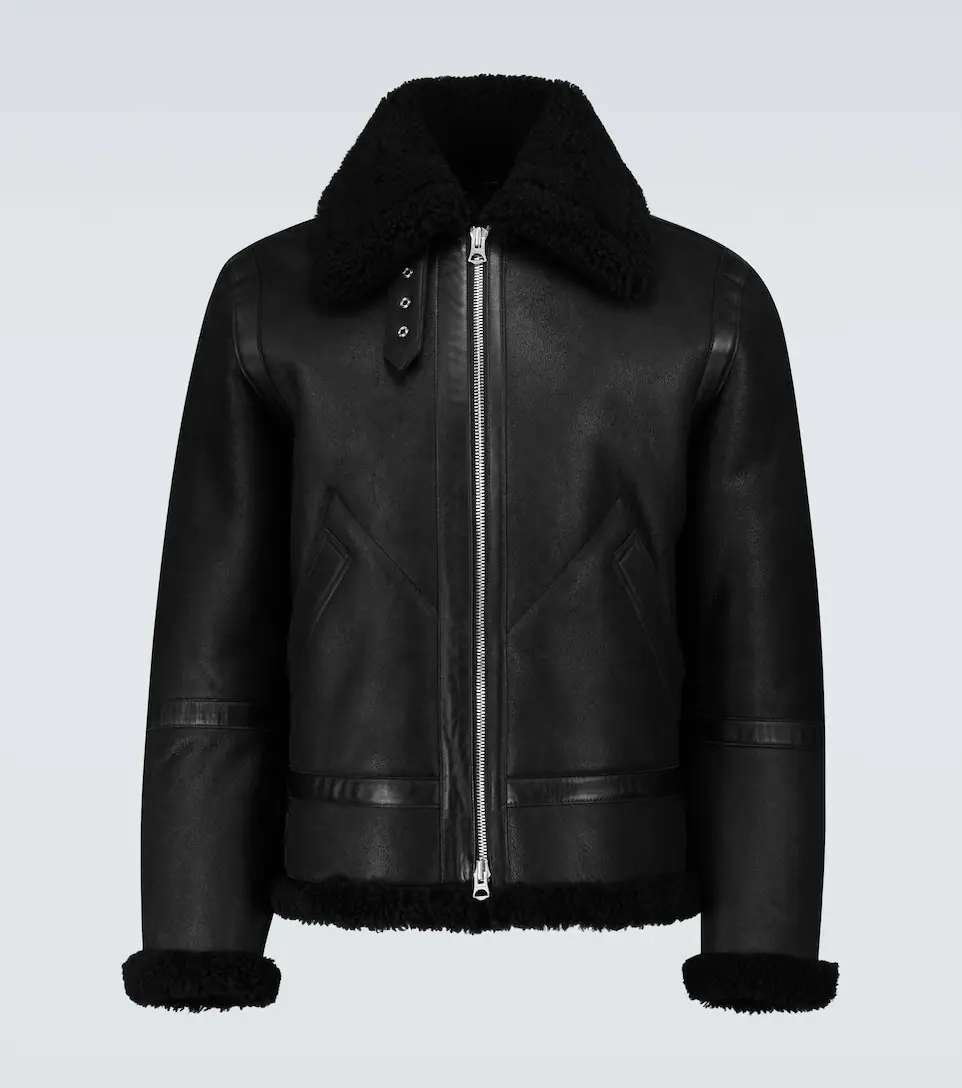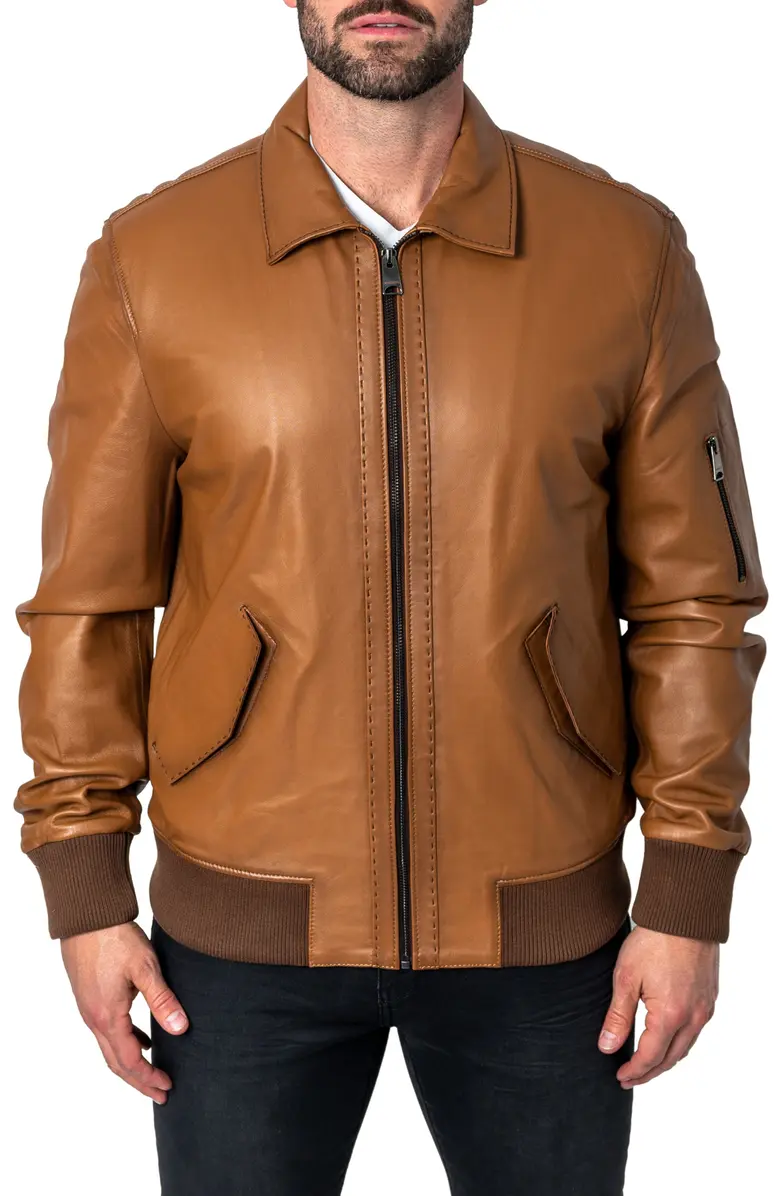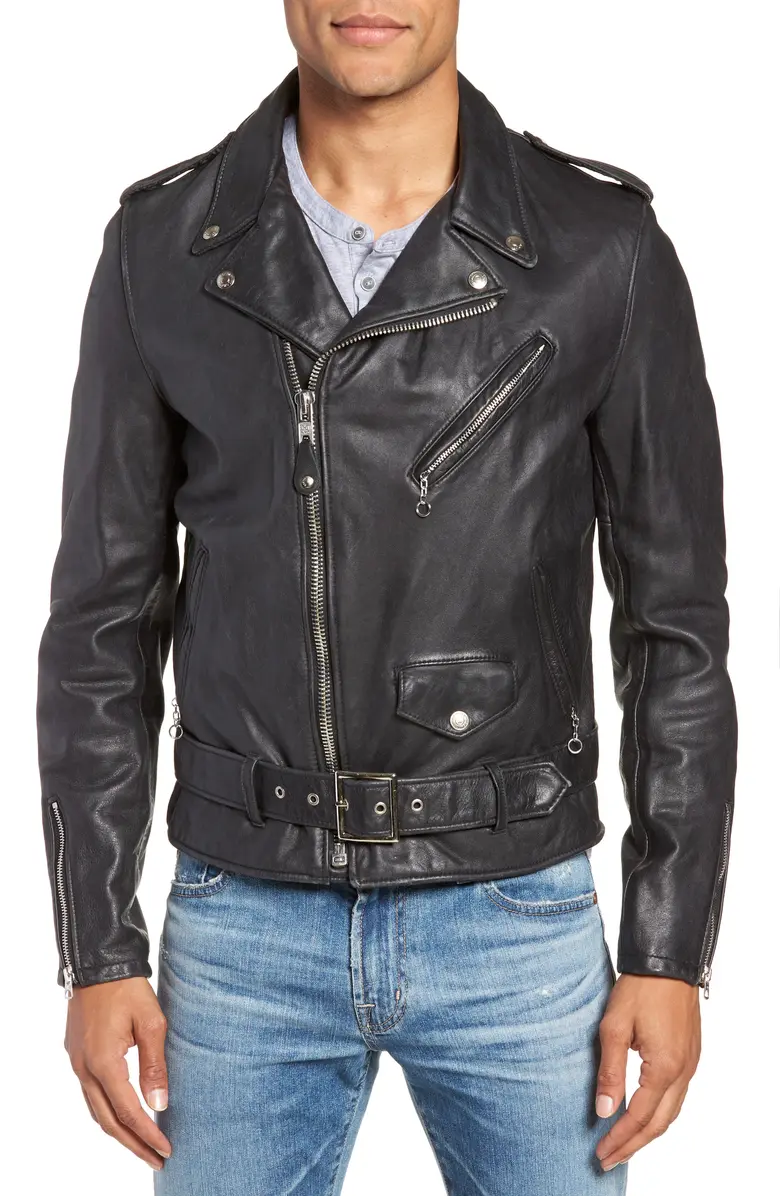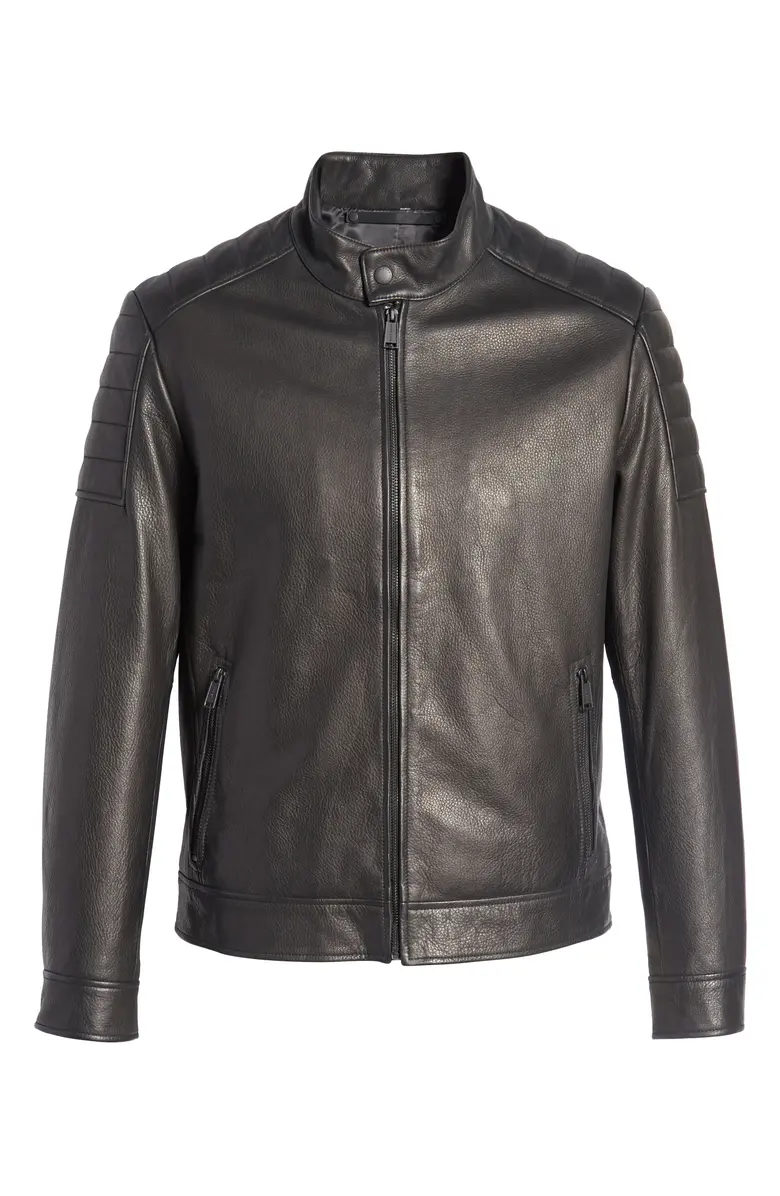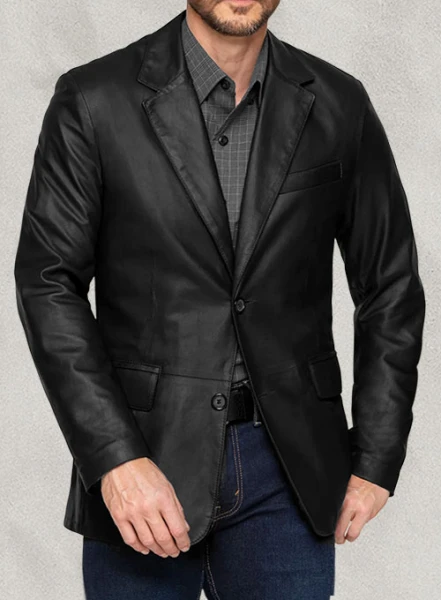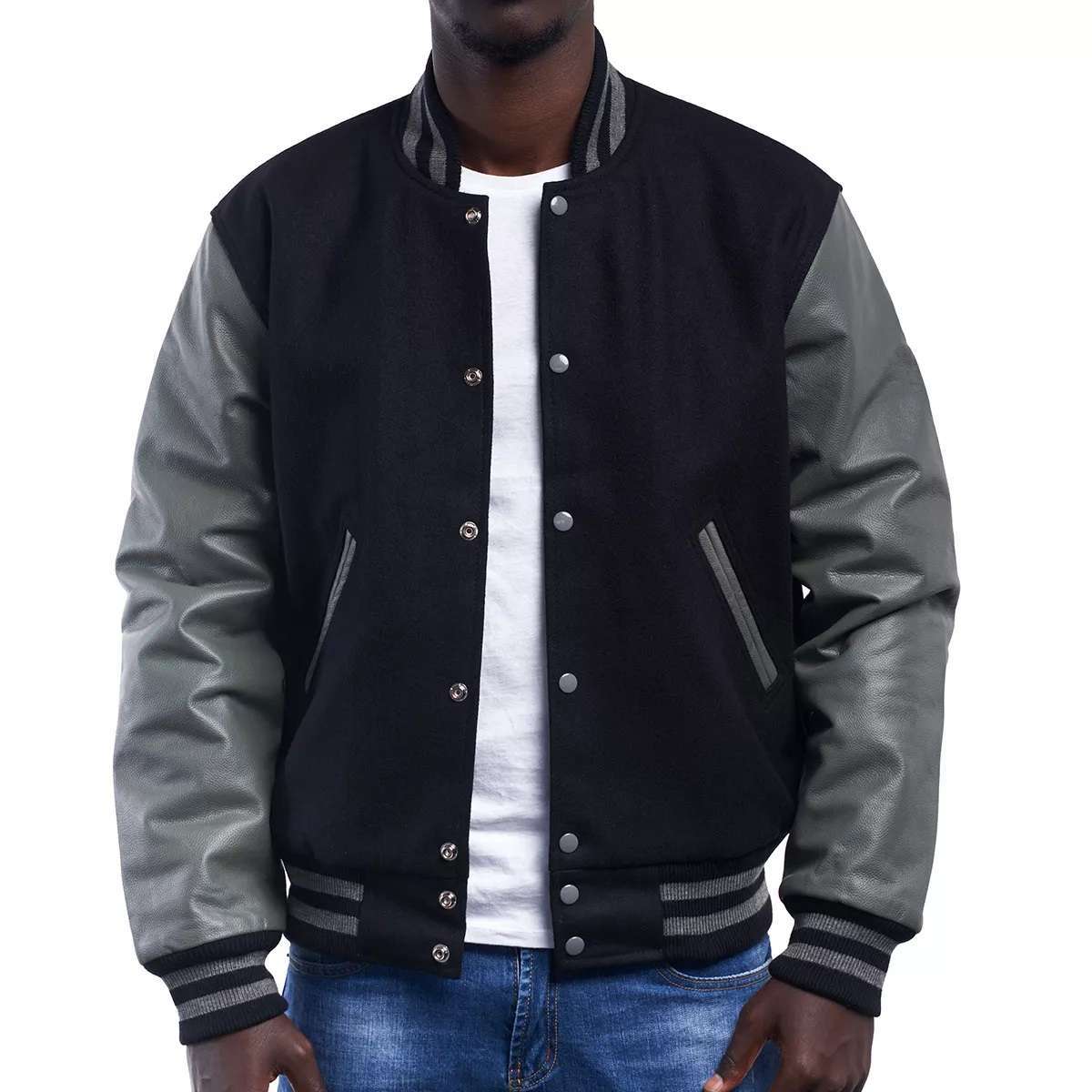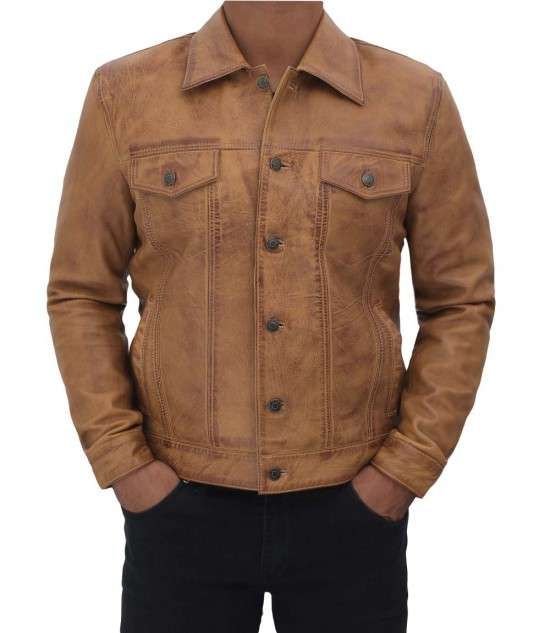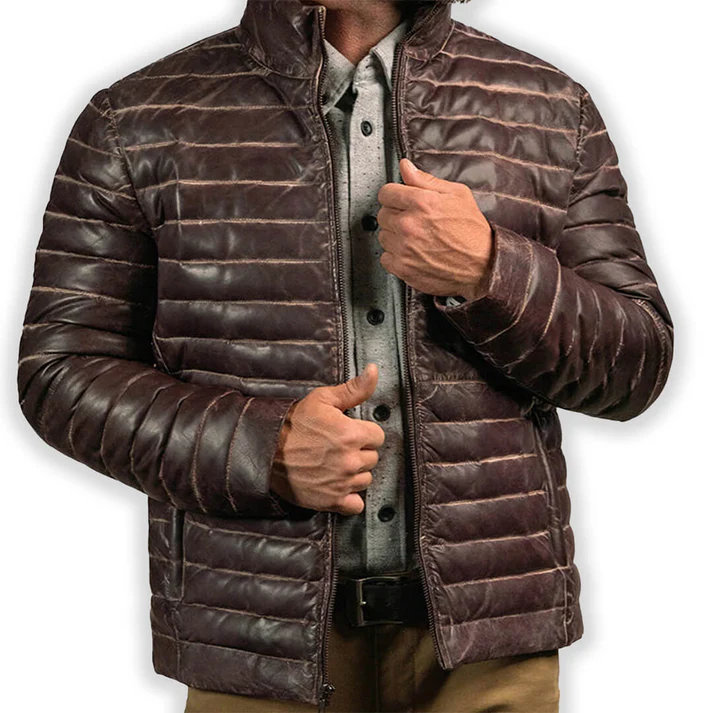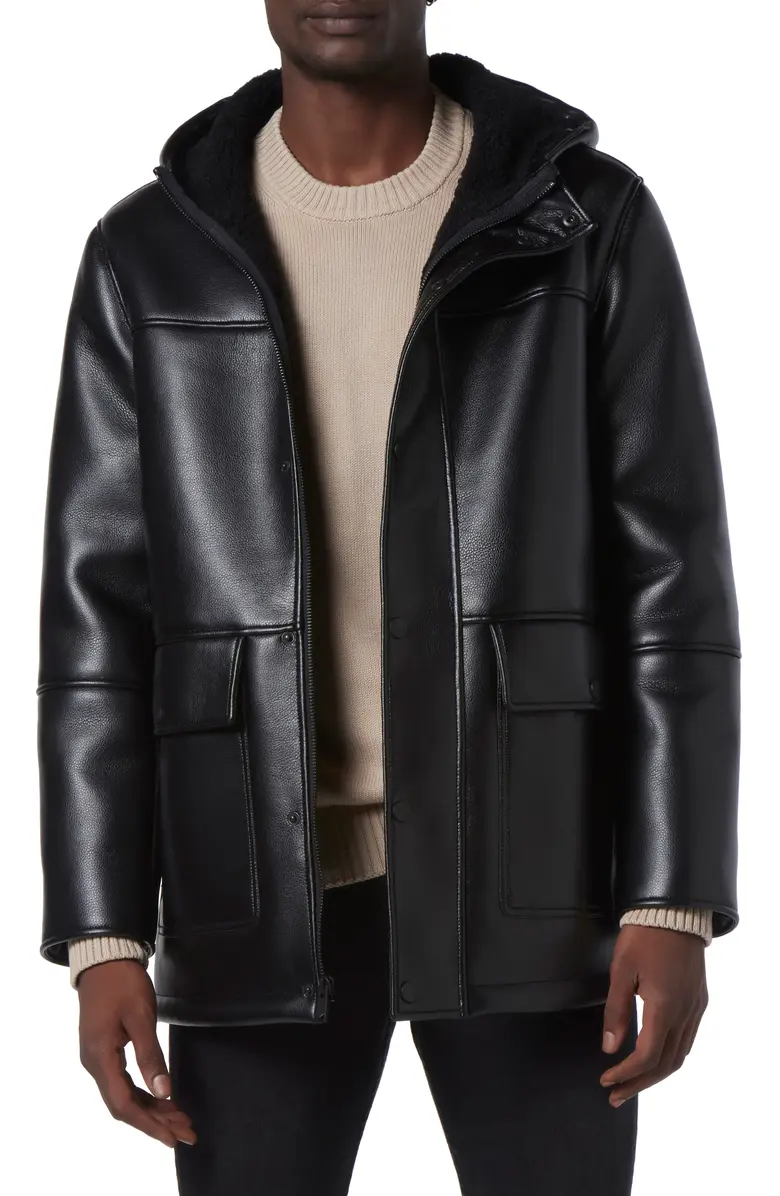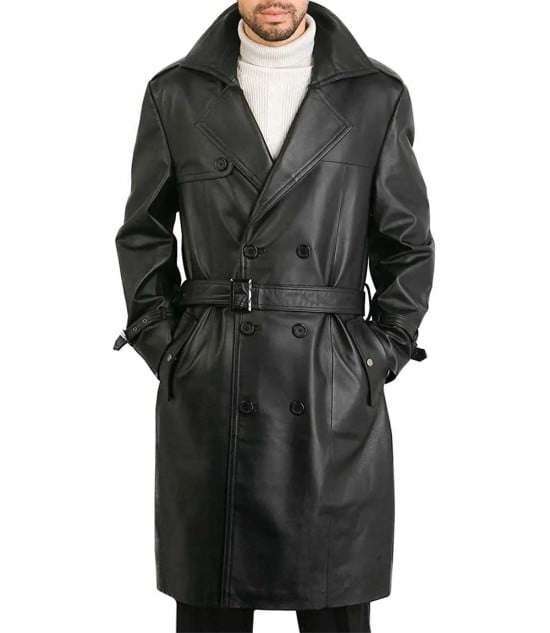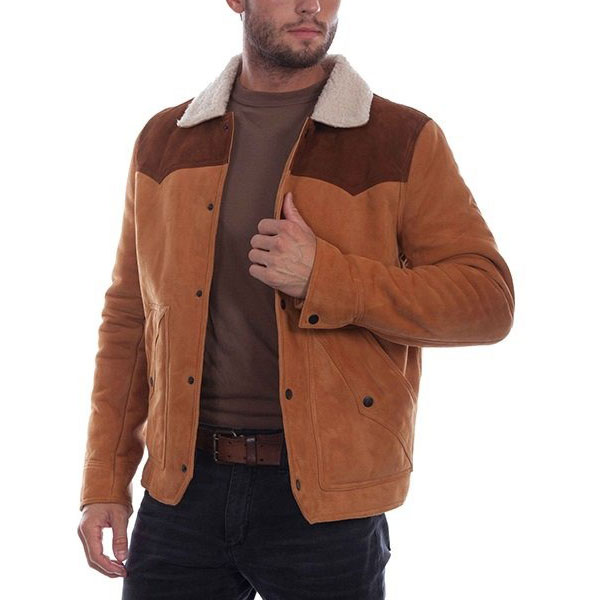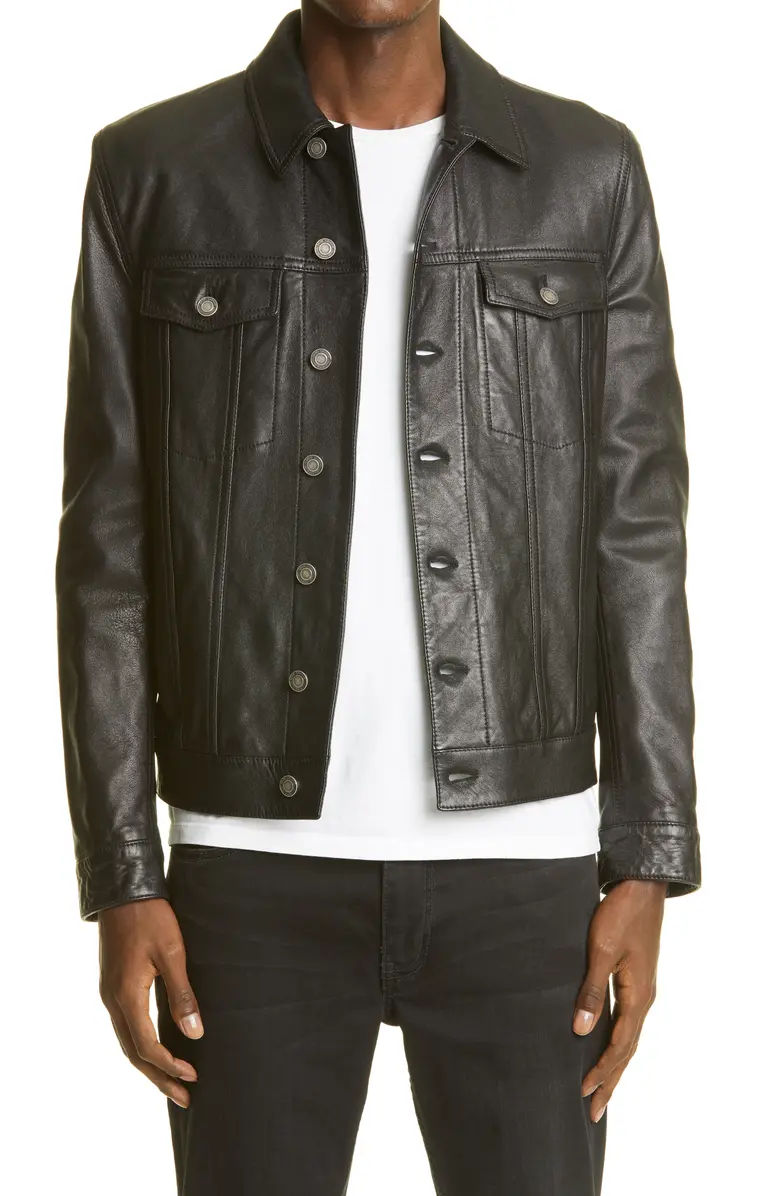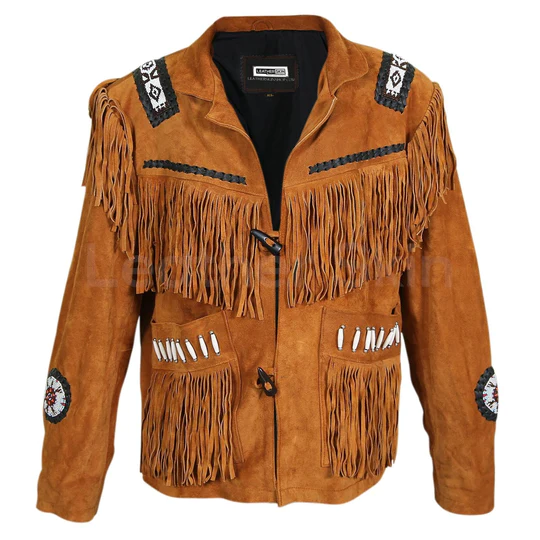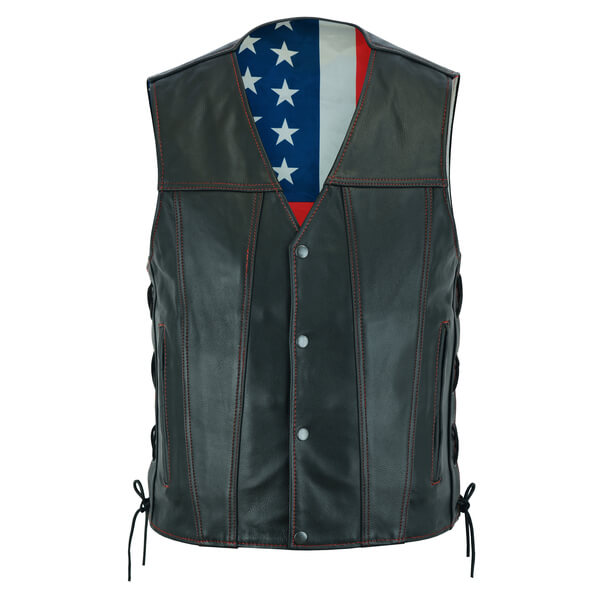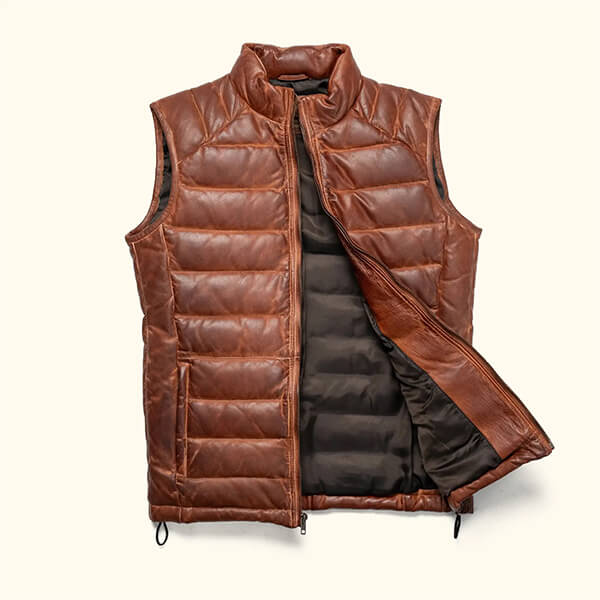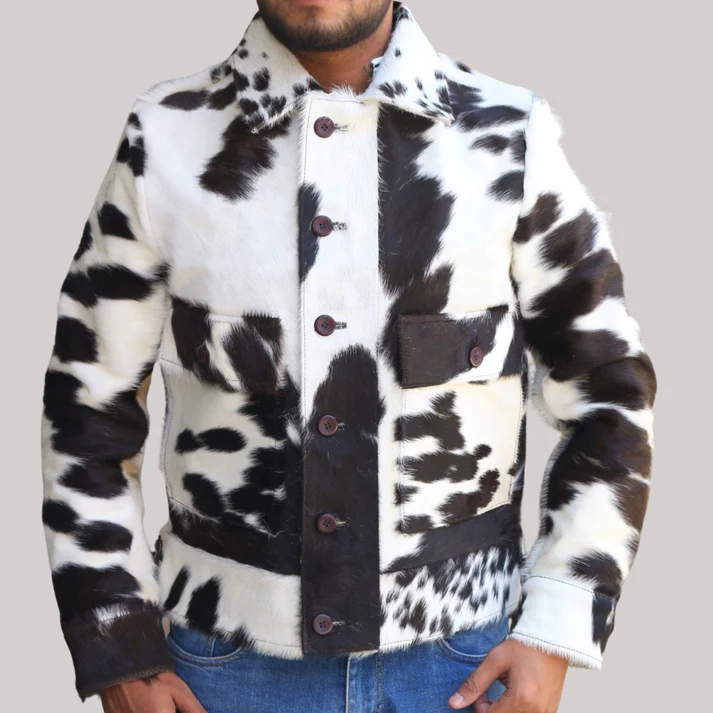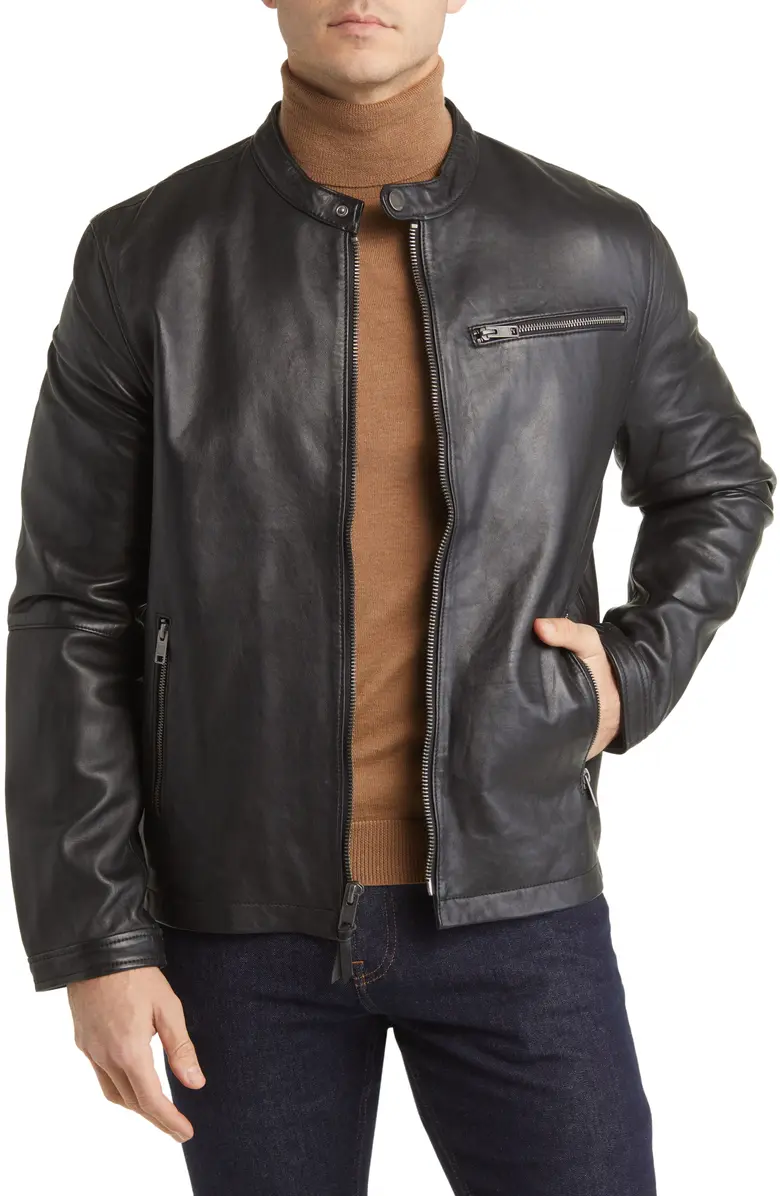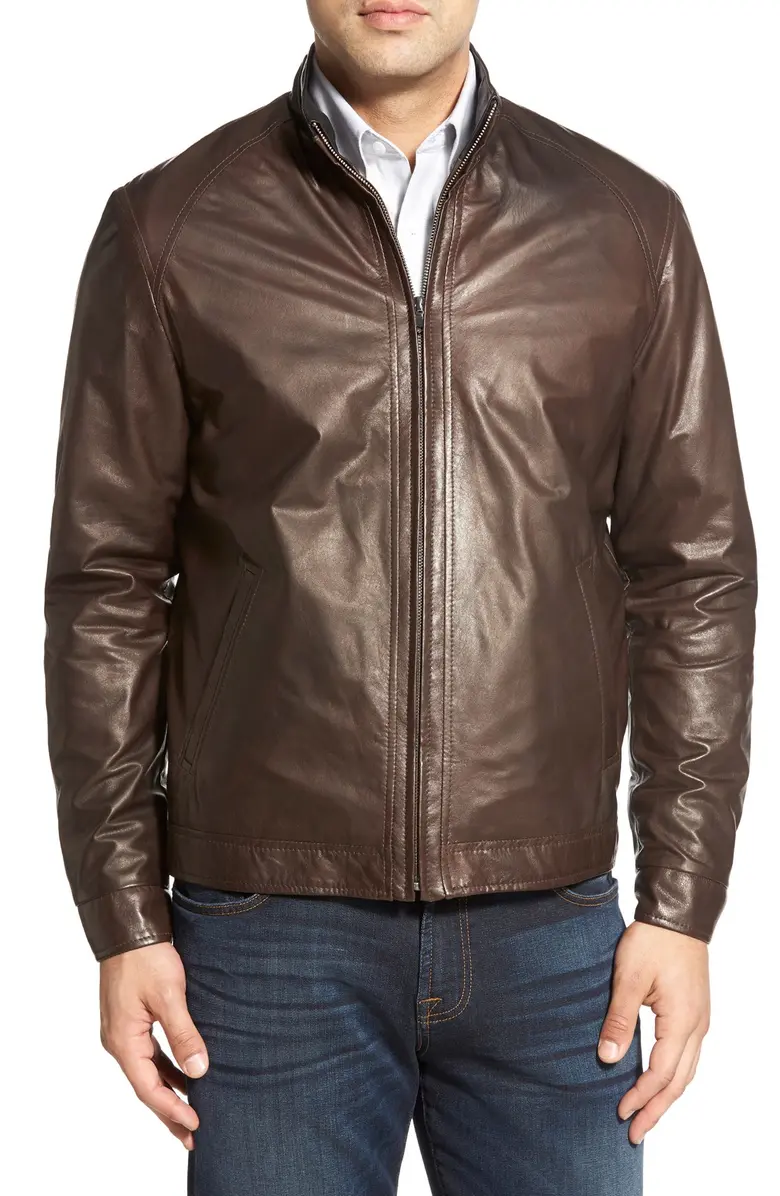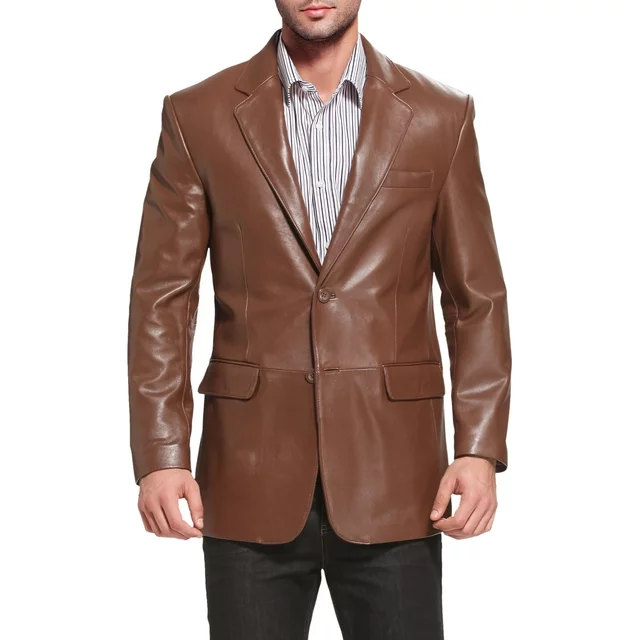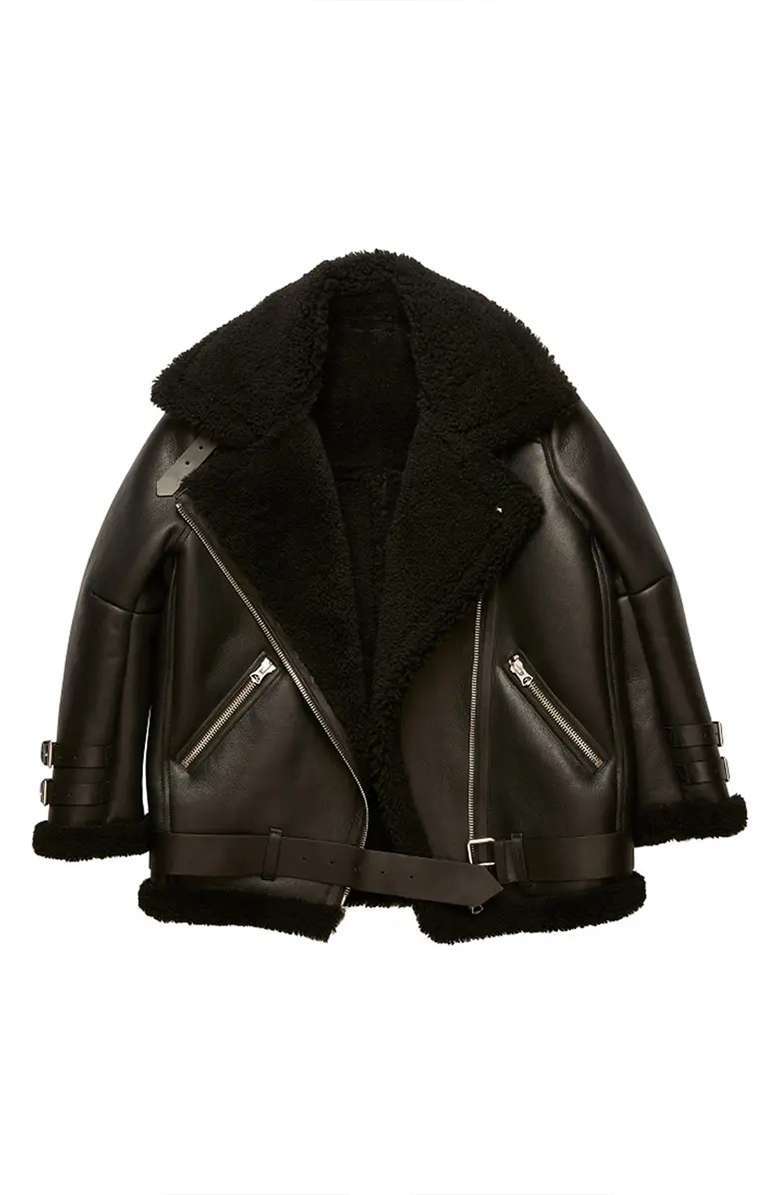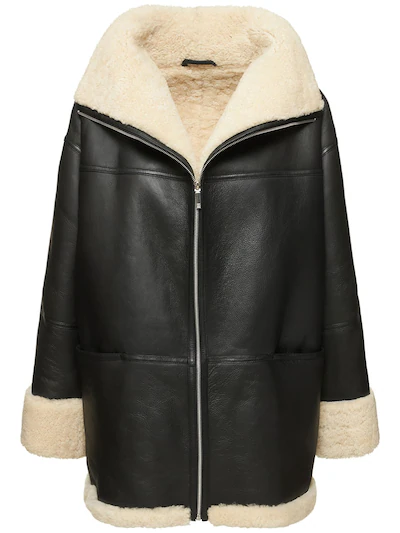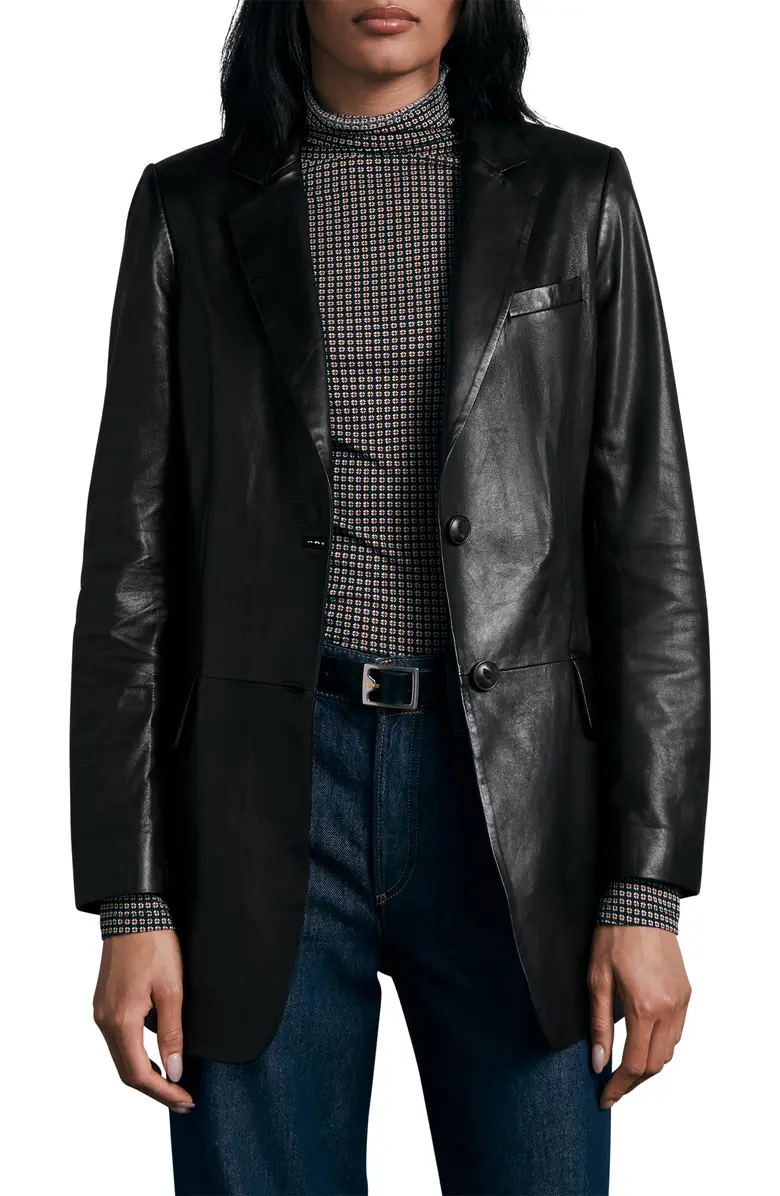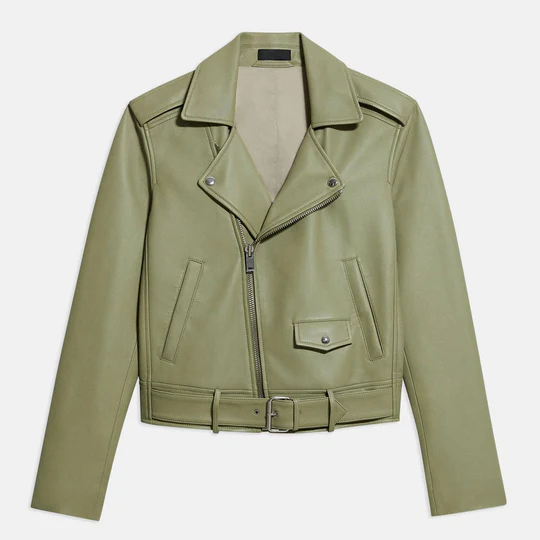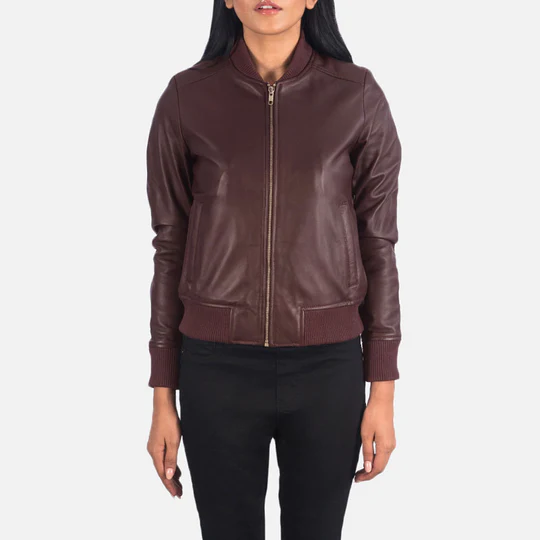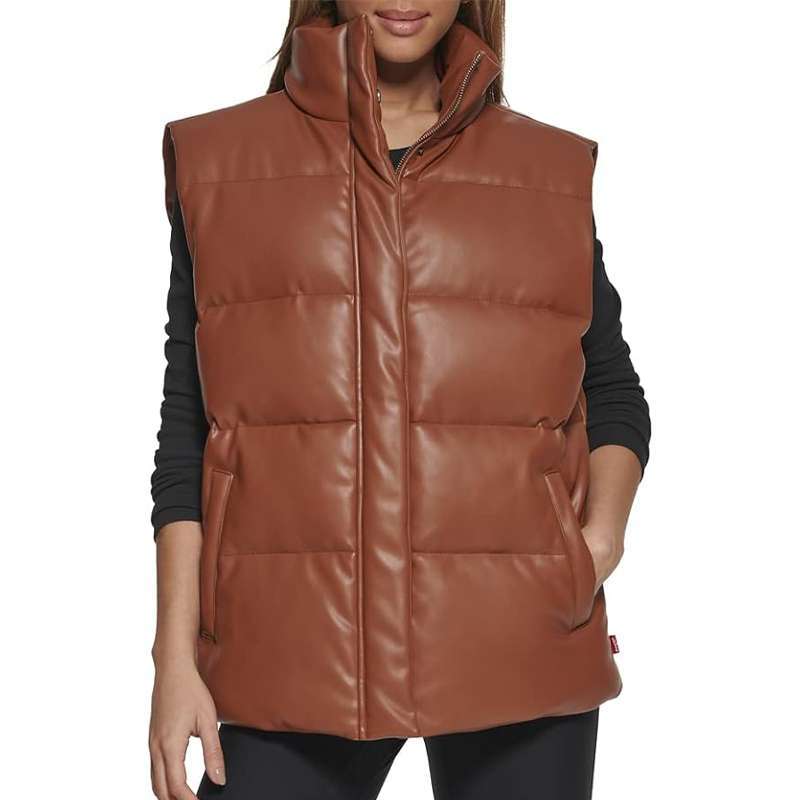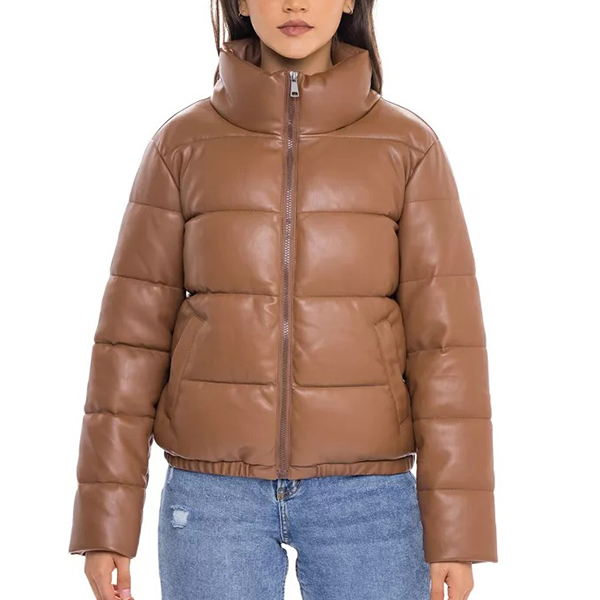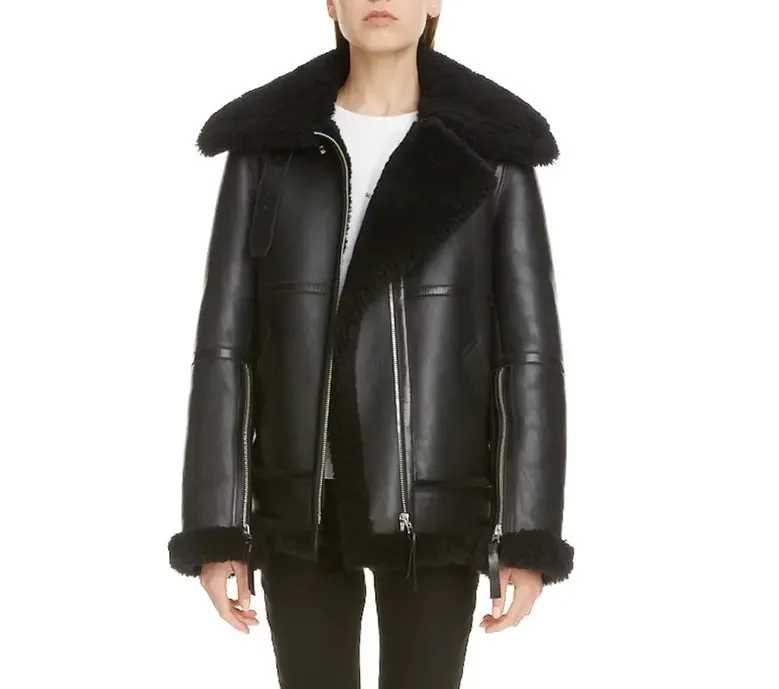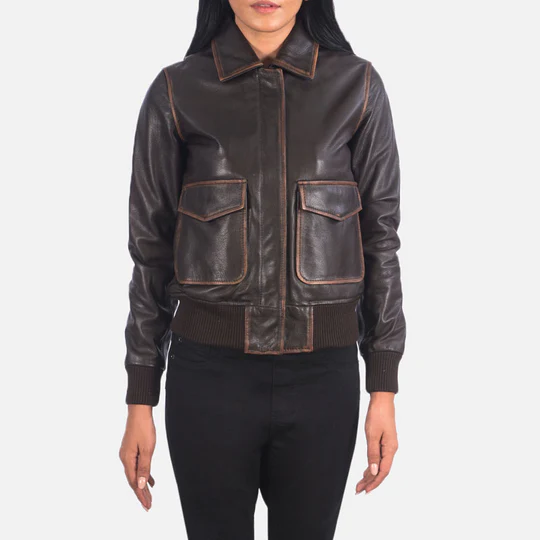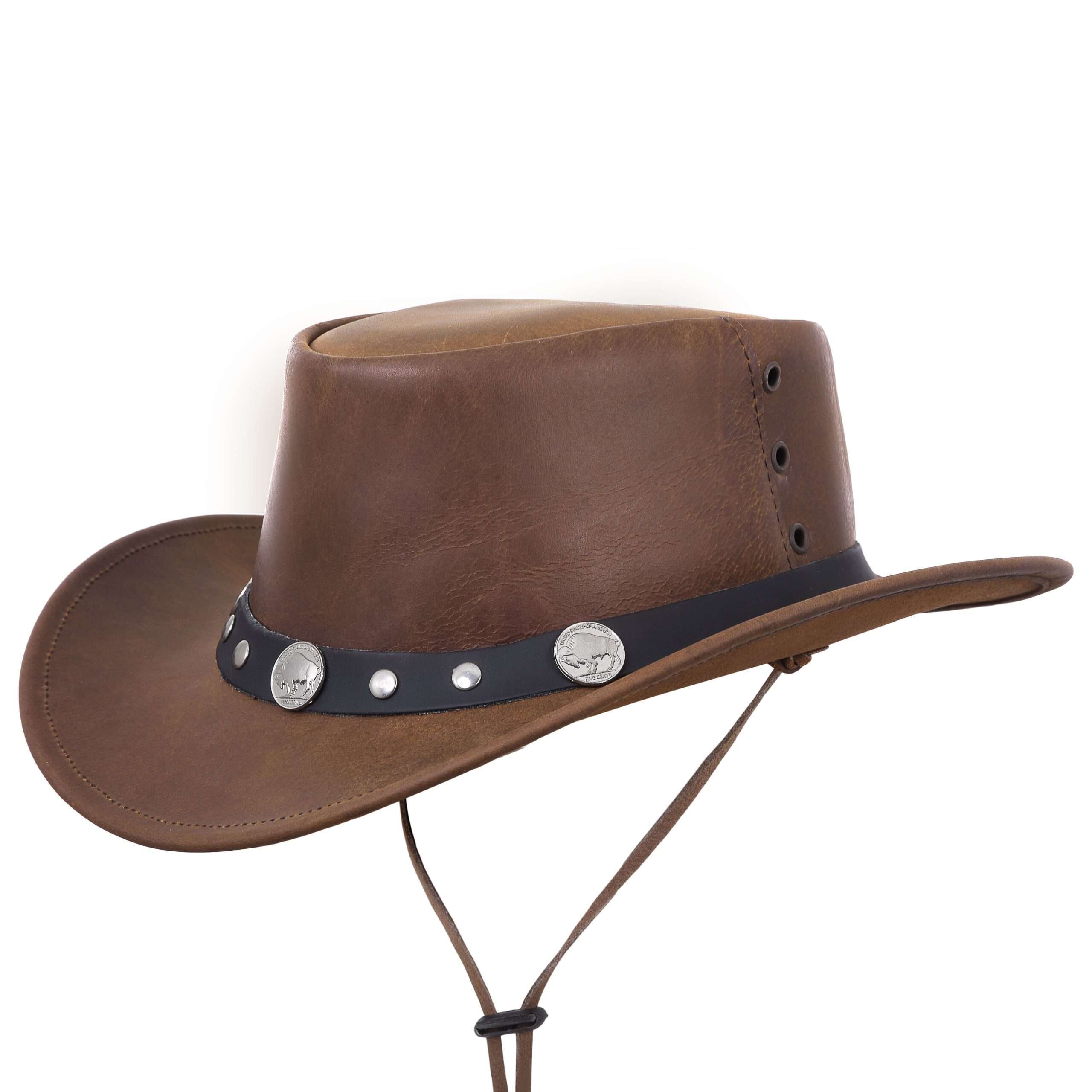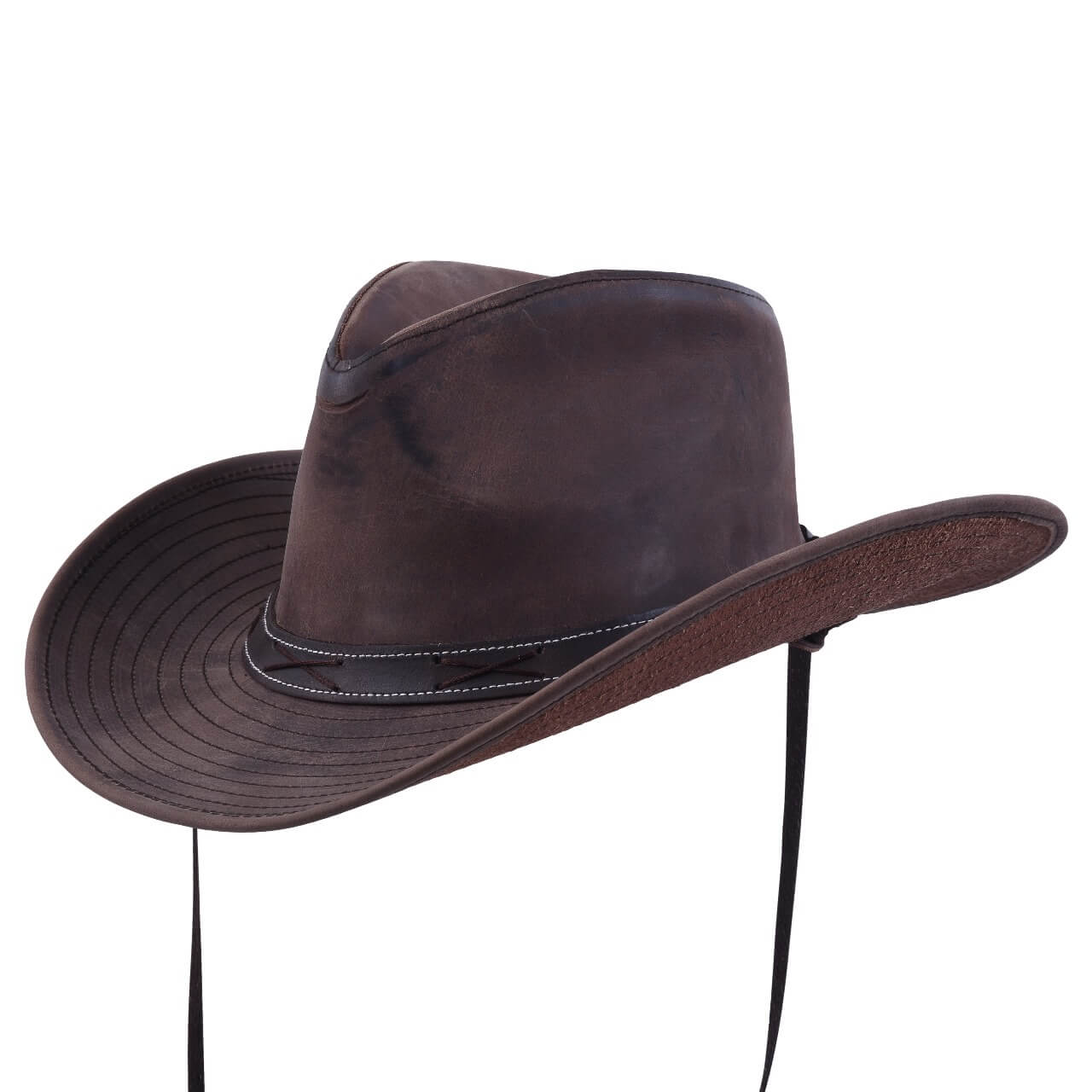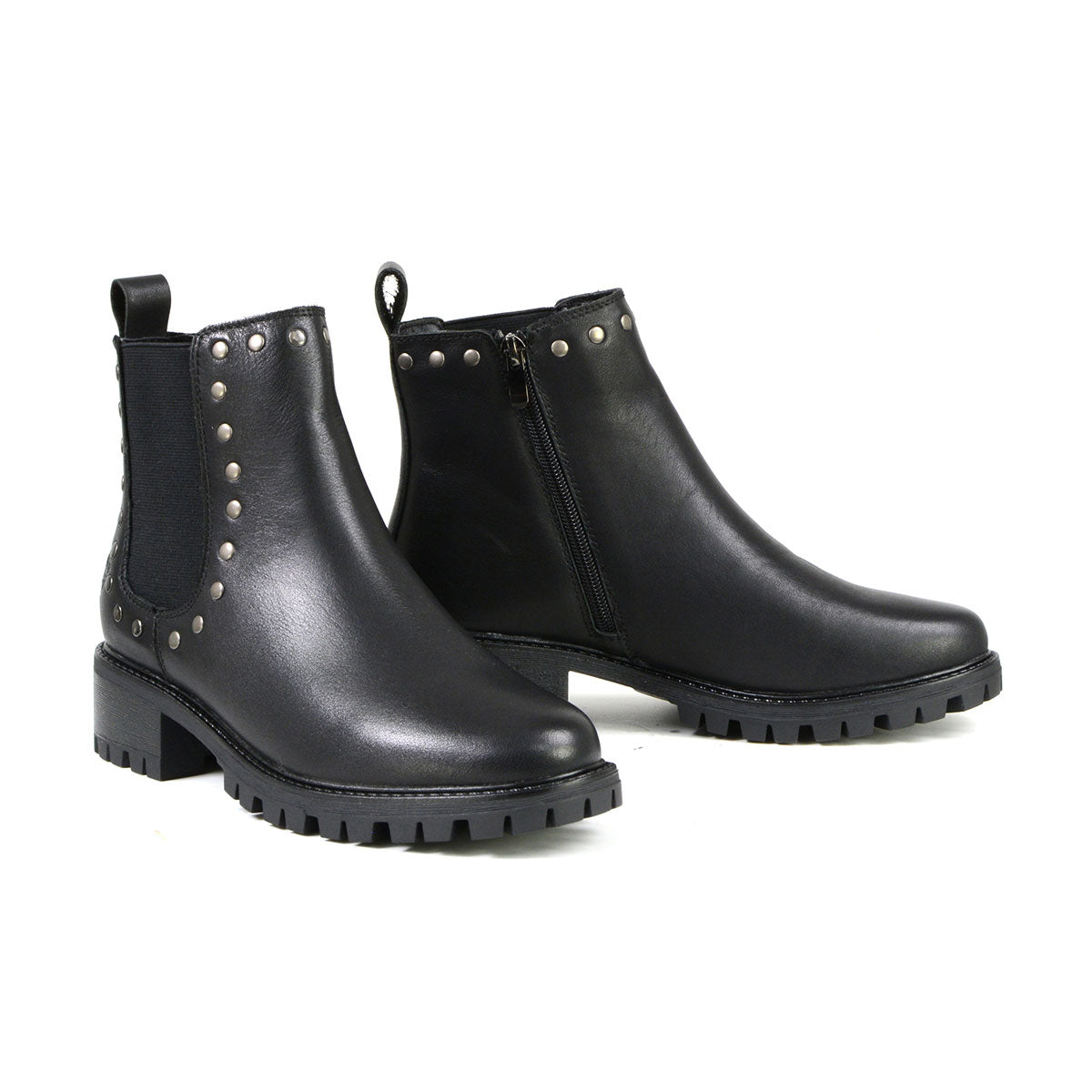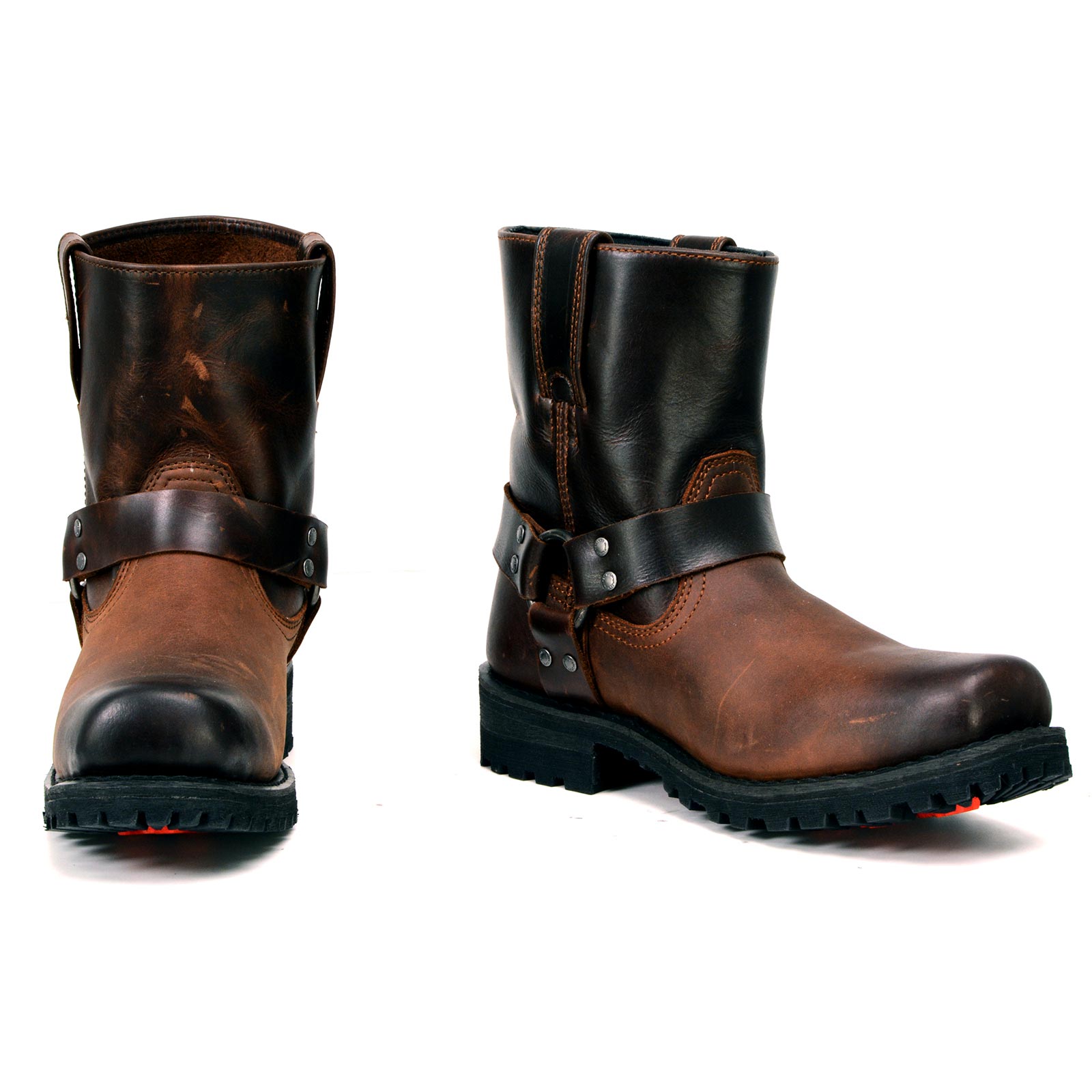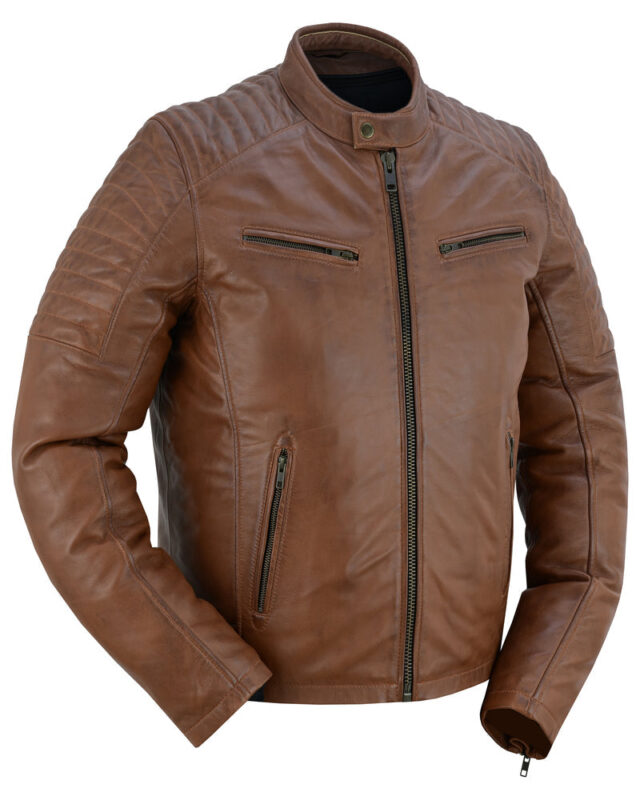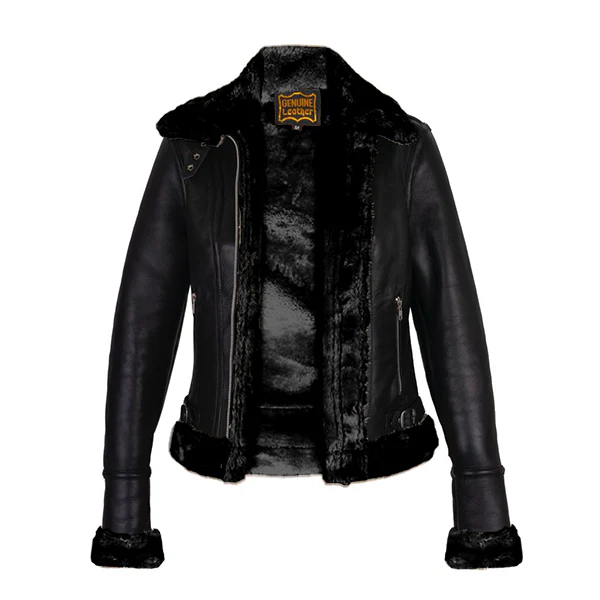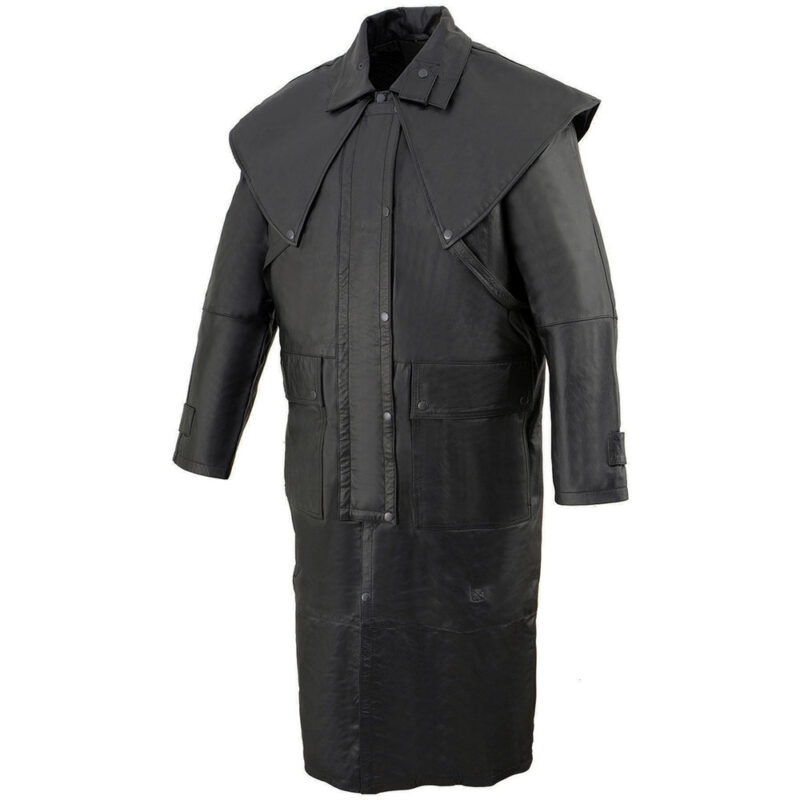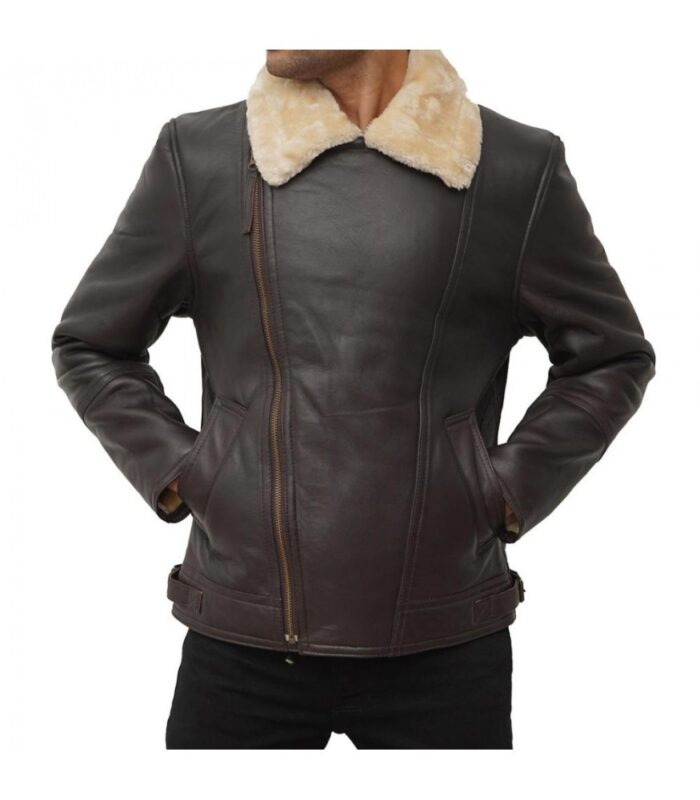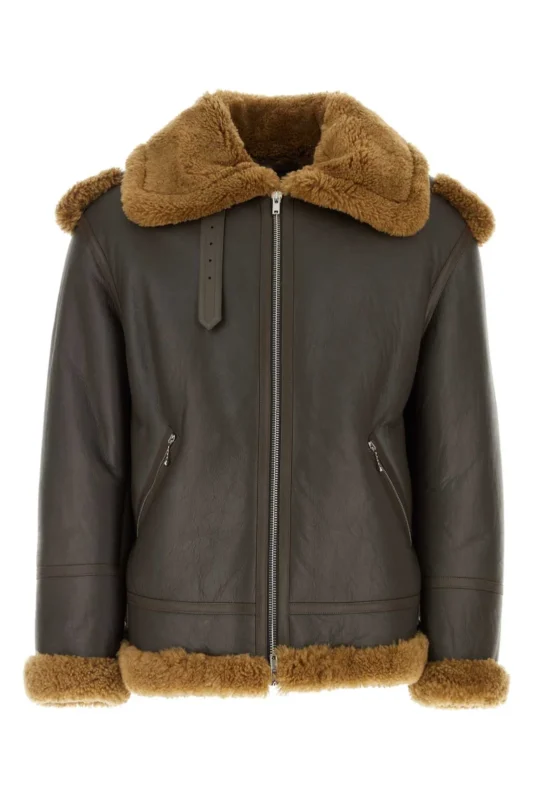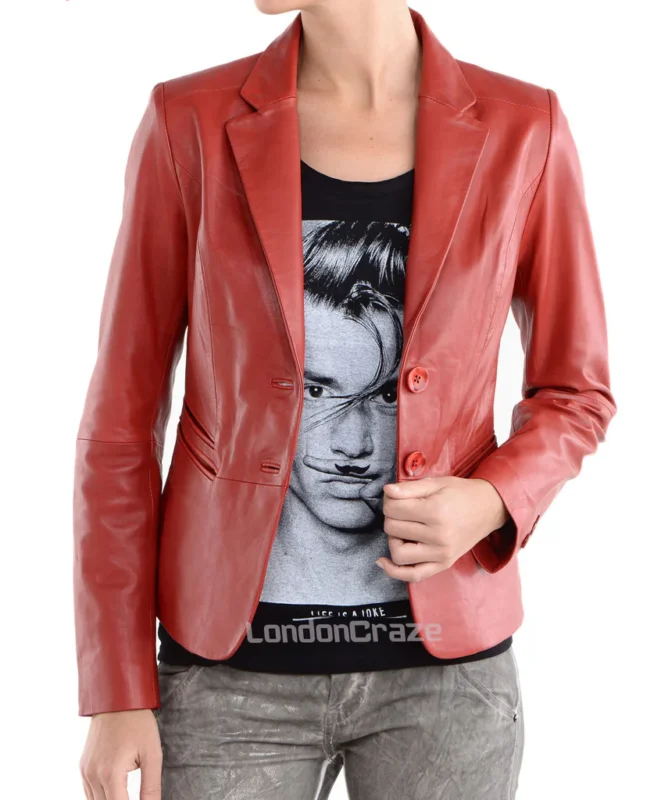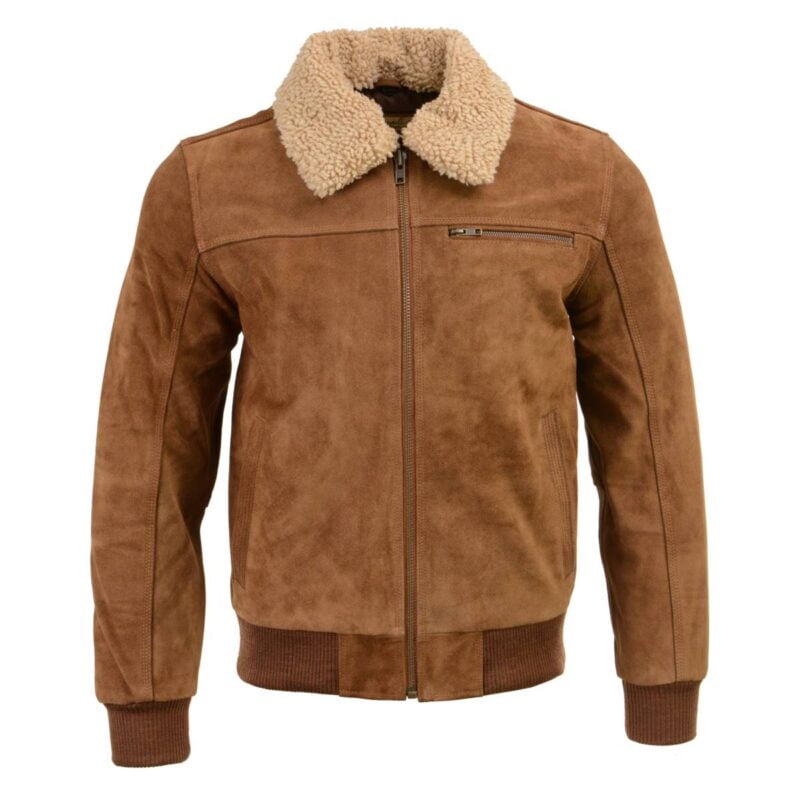Leather jackets are not a new fashion staple. Every winter these outerwear pieces gain traction from the celebrities and fashionistas alike. However, one common concern about leather is its interaction with water. While water can cause temporary discoloration or stiffness, properly treated leather is remarkably resilient. Waterproofing sprays and conditioners ensure leather jackets can endure rain and moisture without lasting damage.
Protecting Your Investment
To maintain the longevity of your leather jacket, it’s essential to understand how water affects different types of leather and apply protective measures. Regular conditioning, using waterproofing products, and storing jackets in cool, dry places are key to ensuring your leather remains supple and attractive.
Men’s Cognac Leather Fashion Jacket Biker Style
Understanding Leather
What Is Leather? A Breakdown of Materials and Types
Leather is a durable material derived from animal hides, primarily cowhide. Its versatility makes it a popular choice for clothing, furniture, and accessories. Leather’s durability and aesthetic appeal depend on its type and treatment during manufacturing.
How Leather Is Made: The Tanning Process
The leather tanning process involves several steps:
- Preparation: Hides are cleaned and prepared for tanning by removing excess flesh and hair.
- Tanning: This critical step stabilizes the proteins in the hide, preventing decay. Chrome tanning and vegetable tanning are two common methods.
- Finishing: Hides are dyed, softened, and finished to achieve the desired texture and appearance.
The tanning process directly influences the quality and performance of the leather used in jackets.
Women’s Black Shearling Leather Jacket Slim Fit
Different Types of Leather Used in Jackets
Full-Grain Leather
Full-grain leather is the highest quality leather available. It retains the entire grain layer, showcasing natural imperfections and patterns. Known for its durability, it develops a rich patina over time, making each jacket unique. Full-grain leather is ideal for premium jackets designed to last a lifetime.
Top-Grain Leather
Top-grain leather is a step below full-grain in terms of quality. The surface is sanded to remove imperfections, resulting in a smooth and uniform appearance. While it lacks the natural patina of full-grain leather, it remains highly durable and more affordable.
Split Leather
Split leather is made from the lower layers of the hide, separated from the grain. It is often used in suede jackets, offering a soft texture but less durability than top-grain or full-grain leather. Proper care is essential to prevent wear and tear.
Faux Leather
Faux leather is a synthetic alternative made from polyurethane or polyvinyl chloride (PVC). It mimics the appearance of real leather at a lower cost and is more environmentally friendly. However, it lacks the durability and aging characteristics of genuine leather.
Men’s Black Leather Trench Coat Western Style Cowhide Duster
How Water Affects Leather
The Science of Leather and Water Absorption
Leather is a porous material, meaning it can absorb water. The extent of absorption depends on the type of leather and its finish. While some leathers are treated to repel water, others are more susceptible to damage when exposed to moisture.
Short-term vs. Long-term Water Exposure
- Short-term exposure: Brief contact with water can cause surface discoloration but is usually reversible with proper drying and conditioning.
- Long-term exposure: Prolonged contact can lead to structural damage, such as stiffness, cracking, or mold growth, making it harder to restore the leather’s original state.
Why Leather Stains or Warps When Wet
When leather absorbs water, the fibers expand and lose their natural alignment. This process causes the material to warp or develop stains as water interacts with dyes and oils in the leather.
The Impact of Humidity on Leather
High humidity levels can have similar effects as water exposure. Over time, excess moisture in the air can lead to mold growth, discoloration, and a loss of elasticity. Using a dehumidifier and conditioning leather regularly can help mitigate these risks.
Men’s Brando Brown Leather Sherpa Moto Jacket
Can Water Completely Ruin a Leather Jacket?
Factors That Influence Damage
- Type of leather: Full-grain and top-grain leathers are more resistant to water damage than split or faux leathers.
- Quality of craftsmanship: Well-crafted jackets with sealed seams and treated surfaces offer better protection.
- Duration of exposure: The longer leather is exposed to water, the greater the likelihood of irreversible damage.
Signs of Water Damage in Leather Jackets
Stiffness and Cracking
Water exposure removes natural oils from leather, leading to stiffness and, eventually, cracking if not conditioned promptly.
Discoloration and Blotches
Uneven absorption of water can cause unsightly blotches and discoloration, especially in untreated leather.
Mold and Mildew Growth
Excess moisture creates an ideal environment for mold and mildew, which can emit unpleasant odors and permanently damage the leather if not addressed.
Cognac Leather Puffer Jacket Women
Protecting Your Leather Jacket from Water
Preventative Measures to Keep Leather Safe
To safeguard your sherpa leather jacket, applying a water-resistant treatment is essential. These treatments create a protective barrier that minimizes water absorption and prevents staining.
Choosing Water-Resistant Leather Treatments
- Beeswax-based products: These provide a natural water-resistant layer and are ideal for full-grain and top-grain leathers.
- Silicon sprays: Easy to apply, these sprays form a water-repellent coating on the leather surface.
- Specialized leather conditioners: Some conditioners include water-resistant properties, offering dual benefits of hydration and protection.
How to Properly Apply Water Protection
- Clean the jacket thoroughly to remove dust and dirt.
- Apply the treatment evenly using a soft cloth or sponge.
- Allow the jacket to air dry in a well-ventilated area.
- Reapply the treatment periodically for ongoing protection.
Men’s B-3 Brown Leather Shearling Aviator Jacket
What to Do When Your Leather Jacket Gets Wet
Immediate Steps to Take
- Gently wipe away excess water: Use a soft, dry cloth to blot away moisture.
- Air-dry naturally: Hang the jacket in a well-ventilated area, away from direct sunlight or heat sources.
Avoiding Common Mistakes When Drying Leather
- The dangers of heat exposure: Avoid using hairdryers, radiators, or direct sunlight, as heat can cause the leather to dry out and crack.
- Over-conditioning too soon: Wait until the leather is fully dry before applying conditioner to restore moisture and flexibility.
Reconditioning the Leather After Drying
Once the biker leather jacket is dry, apply a high-quality leather conditioner to replenish lost oils and maintain softness. This step is crucial for preventing long-term damage and preserving the jacket’s appearance.
Long-term Care for Leather Jackets
Establishing a Leather Care Routine
Regular maintenance is key to ensuring the longevity of your leather jacket. Incorporate cleaning, conditioning, and waterproofing into your routine to keep the material in top condition.
Proper Storage Techniques to Avoid Moisture Damage
Store your leather jacket in a cool, dry place. Use padded hangers to maintain its shape and avoid plastic covers, which can trap moisture and lead to mildew growth.
When to Seek Professional Leather Care Services
For extensive damage or deep cleaning, consider taking your jacket to a professional leather care specialist. Their expertise ensures the jacket is treated appropriately without causing further harm.
Waterproofing Leather Jackets: Is It Worth It?
Pros and Cons of Waterproofing Treatments
- Pros: Protects against rain and spills, extends the jacket’s lifespan, and maintains its appearance.
- Cons: May alter the texture and sheen of the leather, requiring periodic reapplication to remain effective.
How Waterproofing Impacts the Look and Feel of Leather
Waterproofing treatments can make leather slightly shinier or smoother. Choosing high-quality products minimizes these changes while preserving the jacket’s natural appeal.
Waterproofing Faux Leather: What’s Different?
Faux leather is inherently more resistant to water than genuine leather. However, waterproofing sprays designed for synthetic materials can provide additional protection and enhance durability.
Leather Myths Debunked
“All Leather Is Waterproof”: True or False?
This is false. While some leather types are treated to be water-resistant, most leather is porous and absorbs water if left untreated. Always check if your leather jacket has been pre-treated or apply waterproofing products as needed.
“Waterproofing Lasts Forever”: Reality Check
Waterproofing treatments wear off over time due to regular use and exposure to the elements. Reapplying treatments periodically is essential to maintain water resistance.
“You Can Fix Any Water Damage”: Limits of Restoration
While many water damage issues can be mitigated with proper care, severe cases—such as prolonged exposure leading to mold or extensive cracking—may be irreparable. Preventative measures are always better than attempting restoration.
Men’s Brown Suede Leather Bomber Jacket with Sherpa Collar
Choosing the Right Leather Jacket for Your Needs
Water-Resistant Leather Jackets: What to Look For
When shopping for a leather jacket suitable for wet climates, prioritize jackets made from top-grain leather with sealed seams and pre-applied waterproof treatments. Brands that specialize in outdoor or motorcycle gear often offer high-quality water-resistant options.
Alternatives to Traditional Leather for Wet Climates
If you live in a consistently wet climate, consider jackets made from faux leather or other synthetic materials. These options are typically more water-resistant, low-maintenance, and budget-friendly while still offering a stylish appearance.
The Versatility of Leather Jackets
Leather jackets are incredibly versatile, suiting various styles and occasions. From rugged motorcycle jackets to sleek bomber leather jackets, they offer unmatched versatility. The timeless appeal of leather jackets lies in their ability to blend functionality with fashion.
How to Care for Your Leather Jacket
Proper care is essential to extend the life of your leather jacket:
- Condition Regularly: Use a high-quality leather conditioner to keep the material soft and supple.
- Clean Gently: Wipe down your jacket with a damp cloth and mild soap as needed. Avoid harsh chemicals.
- Store Correctly: Store your jacket in a cool, dry place, preferably on a padded hanger, to maintain its shape.
- Protect from Water: Apply a waterproofing spray to shield your jacket from rain and spills.
Conclusion
Leather jackets remain timeless due to their durability, versatility, and style. By understanding the different types of leather and proper care techniques, you can ensure your investment lasts for years to come. Whether you opt for full-grain, top-grain, or faux leather, each type offers unique benefits tailored to your preferences.
FAQs: Leather Jackets and Water
1. Can rain permanently damage a leather jacket?
Yes, prolonged exposure to water can cause leather to dry out, crack, or lose its shape if not treated properly.
2. Is there a difference between water-resistant and waterproof leather?
Yes, water-resistant leather can repel light moisture, while waterproof leather is treated to withstand prolonged exposure to water.
3. What is the best way to dry a wet leather jacket?
Pat it dry with a soft cloth and let it air dry at room temperature. Avoid direct heat sources like radiators or hairdryers.
4. Are there specific leather types more resistant to water?
Yes, treated leathers like nubuck, full-grain, or waxed leather are more water-resistant than untreated leathers.
5. How often should I treat my leather jacket to prevent water damage?
Apply a waterproofing treatment or leather conditioner every 3-6 months, depending on usage and exposure to moisture.
